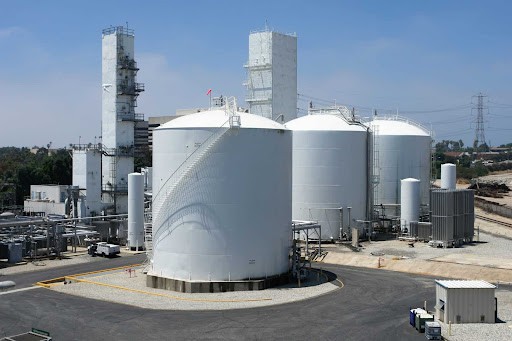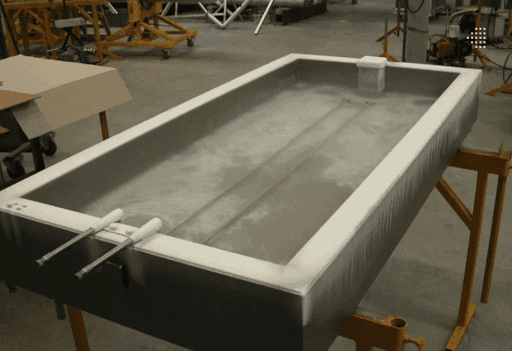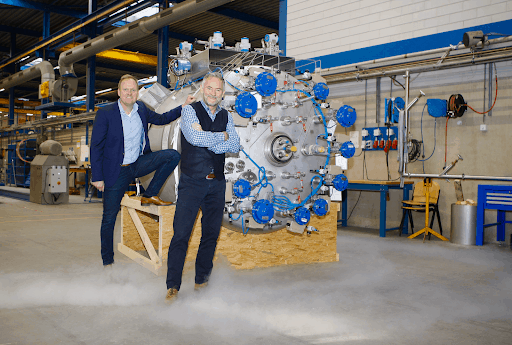While cryogenic technology is central to many industries today, this has not been the case for very long. It wasn’t until the twentieth century that cryogenic technology became increasingly well-known, and the application became broader.
But how did it all start? Why were experiments in liquefying gases carried out in the 20th century? And when did Demaco become active in this fascinating field? We will address this in more detail in this blog.
The first liquid gases
Shortly after the experiments with liquid nitrogen, other gases were also liquefied. Scientists were first successful with liquid hydrogen in 1889 and with liquid helium in 1908.

More and more applications
The early production of liquid gases primarily involved scientific experiments, the mass production of liquid gas did not begin until later. And the more significant and easier this production became, the broader the range of applications became.
A defining moment in the production of cryogenic gases was the development of the air separation plant. In 1902, Carl von Linde built the first air separation plant for oxygen; in 1912, followed by a method of producing both oxygen and nitrogen. Obviously, these were still the early versions of these plants. In the years that followed, the separation and production of gases became increasingly large-scale, sophisticated, and efficient.

During the 1900s, more and more industries discovered the potential of cryogenic technologies. Some key moments in the development of cryogenic applications include:
- In 1911, Kamerlingh-Onnes discovered the now well-known phenomenon of superconductivity. This discovery resulted from his experiments with cryogenic temperatures; this had a significant impact on scientific research.
- Around 1950, cryoprotectants were first used. Cryoprotectants allow cells or tissues to be preserved for an extended period of time, using cryopreservation.
- In 1961, Cooper discovered that liquid nitrogen could be used to remove diseased tissue. This was a breakthrough in the medical industry.
In the space industry, a combination of liquid hydrogen and liquid oxygen was first used to launch the Atlas-Centaur rocket in 1961. From then on, cryogenic gases played an essential role in the launch and testing of spacecraft. - From the beginning of the 1960s, it became widely known within the food industry that liquid nitrogen optimally preserves the quality of frozen food. From that moment on, this cooling method was increasingly used.
These are just a few examples of early inventions and cryogenic applications. Cryogenic fluids are currently used in countless industries, and new possibilities and applications are emerging all the time.
By 2021, liquid nitrogen may be the most widely deployed cryogenic gas. As seen in our recent blog on cryogenic applications, a large portion of applications depend on this liquid gas. In addition, LNG is also widely used, and liquid hydrogen is growing rapidly in popularity. This sustainable liquid has the potential to become the sustainable energy carrier of the future.

Cryogenic infrastructures
The application of cryogenic technologies naturally requires cryogenic systems and infrastructures. Without transfer lines, storage dewars, means of transportation, and quality enhancing products, using cryogenic fluids is impossible.
Cryogenic infrastructures have become increasingly sophisticated over time as well. Materials are becoming stronger, insulation is improving, and high-level engineering ensures that liquid gases optimally retain their quality.
One of the physicists known for his contribution to the development of the cryogenic infrastructure is James Dewar. In 1892, Dewar developed a cryogenic storage container, which was appropriately named dewar.
However, Dewar was not only the inventor of the famous dewar; he was also one of the first scientists to use vacuum insulation. He was convinced of the strong insulating value of this method and therefore used it in the design of his dewar.
The search for the best insulation did not stop at Dewar. In 1950, for example, the multi-layer insulation MLI technique was developed, which from then on was combined with vacuum insulation in many cryogenic systems.
Pioneer in cryogenic technology
Demaco has been involved in developing vacuum insulated transfer lines, cryogenic applications, and auxiliary products since the early years of cryogenic technology.
Demaco first came into contact with cryogenic technology in 1985, and in 1989 the decision was made to make this exciting field of work one of the company’s pillars. This proved so successful that a few years later, the team switched completely to cryogenic technology. This, at that time, still new specialism had precisely the complexity and potential that the Demaco team was looking for.
Demaco’s cryogenic engineers have now accumulated a vast amount of experience in developing the best cryogenic products. As a pioneer in cryogenic technology, Demaco early on designed vacuum insulated transfer lines and auxiliary products, which have been continuously optimized and are kept up with all the latest developments and new discoveries.
Currently, Demaco is working on cryogenic projects in many different industries around the world. Divided into separate business units, Demaco’s experts adapt to each project. They, for example, work on complete turnkey solutions (think of helium, LNG, or hydrogen) and on smaller projects such as the one-time sale of a pipeline section or cryogenic application.
At Demaco, we are proud to have developed into a major player in the cryogenic field!





